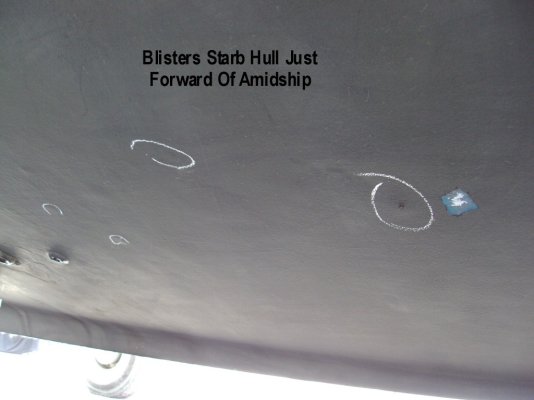GarryP
Senior Member
We bought Mango Mama knowing she had some blister problems. Shes in the yard now getting inspected to determine our options. The blisters actually looked smaller and fewer than when we did the haulout. Maybe the difference is the water. She was lying in fresh water before. Now shes in brackish salt water.
*
A number of the blisters have been popped and it appears they are in the gel coat only. The bottom of each one is a hard, solid resin layer which appears to be infused with glass mat. When punctured, the blisters dribble water and have no styrene smell which the surveyor said was indication that the blisters did not go into the structural glass layers. There are a small number of blisters on the stern near the waterline that may go a little deeper. Have you seen blister problems like this?
*
One option we may be considering is peeling the gel coat, repair where necessary and barrier coat the hull before bottom painting. A more economical option would be to simply sand and patch the worst of the blisters and apply antifouling paint. The first is of course the right thing to do. The second may be the more practical thing to do considering limited finances and other priorities. The boat has been in the water at least two years and shows no sign of structural problems. Maybe the practical thing to do is the right thing. Any thoughts or recommendations?
Thanks,Garry
*
A number of the blisters have been popped and it appears they are in the gel coat only. The bottom of each one is a hard, solid resin layer which appears to be infused with glass mat. When punctured, the blisters dribble water and have no styrene smell which the surveyor said was indication that the blisters did not go into the structural glass layers. There are a small number of blisters on the stern near the waterline that may go a little deeper. Have you seen blister problems like this?
*
One option we may be considering is peeling the gel coat, repair where necessary and barrier coat the hull before bottom painting. A more economical option would be to simply sand and patch the worst of the blisters and apply antifouling paint. The first is of course the right thing to do. The second may be the more practical thing to do considering limited finances and other priorities. The boat has been in the water at least two years and shows no sign of structural problems. Maybe the practical thing to do is the right thing. Any thoughts or recommendations?
Thanks,Garry

